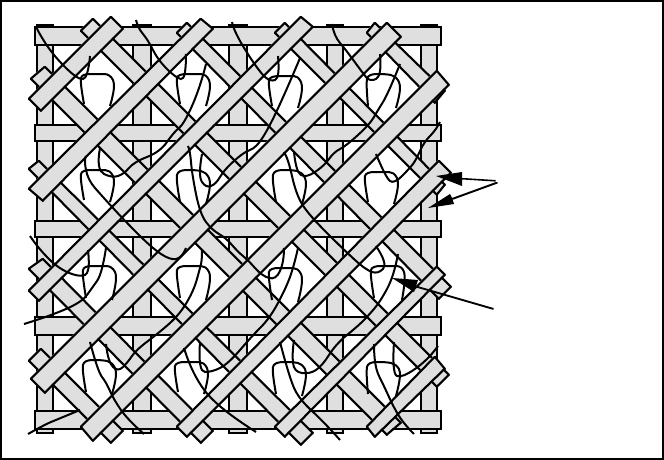
OVERVIEW OF TEXTILES
Figure 2-6. Multi-axial warp knit.
2.1.2.6 Stitching
Stitching has been used for more than 20 years to provide through-thickness
reinforcement in composite structures. It significantly enhances damage tolerance. The
major manufacturing advance in recent years has been the introduction of resin transfer
processes which allow one to stitch dry preforms, rather than prepreg material. This
enhances speed, allows stitching through thicker material, and greatly reduces damage to
the in-plane fibers.
As well as enhancing damage tolerance, stitching also aids fabrication. Many textile
processes generate preforms that cannot serve as the complete structure. For example, bias
plies usually must be attached to 0/90° weaves; or stiffeners to a skin. Stitching provides a
mechanical connection between the preform elements before the resin is introduced,
allowing the completed preform to be handled without shifting or damage. In addition,
stitching compacts the fiber preform closer to the final desired thickness. Less mechanical
compression need then be applied to the preform in the tool.
In many applications, strength and damage tolerance requirements would be
satisfied by less than one volume percent of stitching fibers. However, the minimum
volume of stitching is set by the fabrication process. While there is considerable latitude in
stitch density, the lower bound in current technology sometimes exceeds the amount
needed, thus unnecessarily sacrificing in-plane properties.
